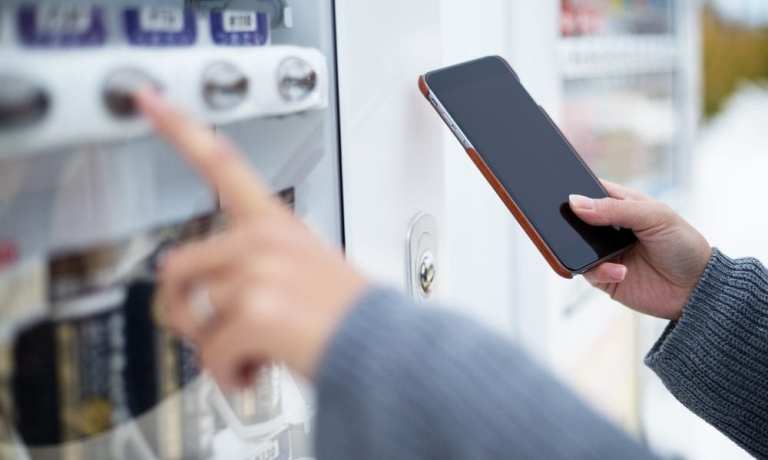
Among the more interesting storylines of this era of digital commerce and payments is the maturation of vending machines — sorry, “unattended retail.” And now that story involves Champagne (along with similar beverages that are Champagne-like but not technically Champagne).
Look to the Ritz-Carlton in Philadelphia for the freshest evidence of that. According to a recent report this week (July 2), “Late last week, a Moët Mini-matic popped up at the luxury hotel in Center City. Moët and Chandon’s vending machines are filled with chilled mini bottles of Brut Impérial and Rosé Impérial that each come with a tiny gold sipper, making it easier to down your bubbly straight from the bottle.”
The payment process does seem to have a bit of friction, though — but that’s perhaps to be expected when it comes to sales of an age-restricted product such as classy alcohol. “To get Champagne at the press of a button, go to the lobby bar and purchase a $25 gold token,” the report stated. You’ll insert that into the vending machine and a robotic arm will gently lower your chosen bottle to the window without shaking it.”
Vending Machine Trends
Retailers are paying more attention to vending machines, a trend that is all but certain to continue into the 2020s. Digital technology and payment methods are playing big roles in fueling advances and boosting the appeal of unattended retail.
Vending machines that have implemented cashless technologies saw significant sales growth, according to a study cited by the PYMNTS Unattended Retail Tracker, with the most impact observed on units that took in under $2,000 a year. On those machines, gross sales rose 110 percent in the 18 months after the addition of cashless options.
Indeed, the estimated value of the global intelligent vending machine market by 2025 is $15 billion. And digital disruptors are putting a new spin on vending machines.
For instance, the first big change Vengo made to the vending machine was its size — its version is a little over 2 feet tall, a little less than 3 feet wide and exactly 6 inches deep, in comparison to a 6-foot tall machine. The wall-mounted machine also has a 21-inch screen for consumer interaction, and comes ready to accept near-field communication (NFC) contactless and card payments. Vengo Labs CEO and Co-Founder Brian Shimmerlik told PYMNTS in a January interview, “We love shrinking down, and bringing the design and technology a whole new flavor. That smaller size opens up whole new markets, and gains access to spaces that have never had a retail experience [as] a part of it.”
Not only that, but the projected CAGR of the global interactive kiosk market from 2019 to 2027 is 6.1 percent. In India, for instance, Amazon is gearing up to roll out kiosks that will let consumers buy hardware, including its Kindle eBook reader, Echo, Fire TV Stick and its smart speaker. The eCommerce retailer reportedly plans to install 100 kiosks in malls across India by the end of 2019. The company has been testing kiosks for a couple of years now, and has been operating four of them for longer than a year in Karnataka, Mumbai and Ahmedabad. An Amazon spokesperson said in an emailed response, “We do not speculate on our future road map, but we’re always looking at ways to provide the best experience to our customers.”
Better Food
Upscale brands of alcoholic beverages are not the only items showing up in new vending machines. To bring nutrient-dense meal options into buildings, prepared meal companies are turning to unattended retail.
Alpaca Market, for instance, has a network of vending machines and smart fridges in Austin, Texas. The company’s Founder and CEO Joe Kerby told PYMNTS in an interview that the company serves places “where you find yourself working, living [and] playing.” Those environments include office buildings, gyms and apartments. In other words, Kerby said, “places you would find yourself throughout the day with limited food options.”
Alpaca Market offers a digital touchscreen on its vending machines that lets consumers browse its menu, look at nutritional facts and ingredients and see pictures of the food. Kerby noted the company’s jars are clear, so many people look at the food in the machine before making their selections. When they are ready to check out, consumers can pay through the vending machine with credit cards, debit cards, Apple Pay and Android Pay. “It’s an elevator-style machine” that brings food to customers, Kerby said.
Vending machines are on an upward trajectory, and it’s a good bet that more products and more locations will work themselves into the mix.